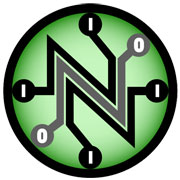
Verizon Wireless may be bitterly regretting the challenge Verizon made to the Federal Communications Commission’s Net neutrality rules a few years ago. There’s little doubt competing wireless providers are.
Verizon in 2010 sued the FCC over the rules it had put in place mandating that ISPs treat all Internet data the same. The D.C. Circuit Court of Appeals earlier this year agreed with Verizon and struck down the rules.
Fast-forward several months. The FCC is putting it all back on the table. It intends to reclassify broadband Internet as a “telecommunications service” under Title II of the Communications Act — and apply similar regulations to wireless broadband.
Mobile broadband providers are fighting against the measure, but it appears those efforts are not gaining traction, according to a report in the National Journal.
That is why competing wireless providers are “furious” with Verizon at the moment, the report suggests.
The wireless industry has raised some salient points in seeking to garner support for its position.
Fact vs. Myth
The Internet Innovation Alliance recently circulated among reporters a “myth and fact” statement that dissects some of the issues.
For starters, the FCC in 2010 noted that special characteristics of mobile broadband infrastructure mean mobile providers must have additional flexibility in how they manage the traffic on their networks.
Resource constraints — that is, the limited amount of spectrum available for consumer use — already hinder mobile networks, and to apply wireline network standards to this environment would be “onerous,” the commission then said.
The FCC imposed two conditions on wireless networks in 2010, the IIA also noted. One was that wireless networks could not block access to legal websites, with exclusions for reasonable network management. The second was that wireless network providers had to disclose their network management practices, performance, and terms and conditions of their broadband services.
The second condition, presumably presented as an argument for maintaining the wireless network regulation status quo, should be met by consumers with a resounding “Ha!” Those disclosures — like all mandatory disclosures, including privacy policies — are written in densely worded legalese, impossible for the average time-strapped consumer to parse.
As for the first condition, it is difficult to imagine a wireless network provider having the gall to blatantly block a site that is competitive or that it doesn’t like for some other reason, if its content is legal. Slowing down access to a site, however — that’s another story.
The wireless industry nevertheless has a point about spectrum and scarce resources, and companies that are connecting with their customers via mobile devices may well be concerned if wireless falls under Net neutrality rules. If those companies are not yet the majority, it’s likely they soon will be.
Picture mobile texts from customers complaining about certain issues — or worse, mobile texts containing product orders — getting lost in the ethernet.
Here Comes Project Loon
There is another possible solution, although it’s one that Verizon Wireless and its competitors might like even less: a wholesale shift in how wireless broadband is provided.
If such a shift were to come to pass, we would have Google to thank. It clearly does not want to see mobile wireless broadband restricted — but one somehow gets the sense that it doesn’t expect the wireless broadband providers currently on the scene to do right by all content providers either.
One tech project Google has been developing is Project Loon — an initiative in which it hopes to beam Internet access to unconnected people around the world using high-altitude balloons and home-based antennas.
Testing has been under way for some time, and Astro Teller, who runs the Google X research lab, in recent months said there would be a “semi-permanent” ring of balloons around southern hemisphere within the next two years. Google X also is birthing Project Wing, Google’s drone delivery endeavor.
Perhaps more intriguingly the Wall Street Journal recently reported that Project Loon also has tested LTE high-speed wireless data technology, which could sent Internet signals directly to a mobile phone instead of the antennas, according to a report in The Wall Street Journal.
Google would partner with cellular providers to facilitate this, the Journal indicated, but one can imagine scenarios in which Google would strike out on its own if the conditions weren’t right.
It would be the equivalent of Google Fiber — but for the wireless world.






















































